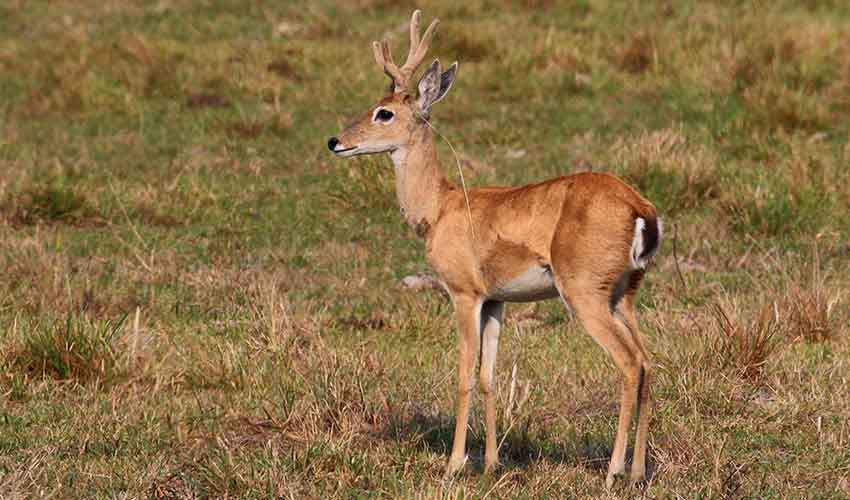A graceful and elusive species native to the open grasslands and savannas of South America, particularly the Pampas regions of Argentina, Brazil, Paraguay, Uruguay, and Bolivia. Once widespread across these fertile plains, the Pampas deer has become rare in many parts of its former range due to habitat loss, hunting, and competition with livestock. Still, it remains a symbol of South America’s natural grassland heritage, known for its agility, gentle nature, and subtle beauty.
Unlike many other deer species that live in dense forests, the Pampas deer thrives in open habitats, where it relies on camouflage and speed rather than cover. It has a slender body, long legs, and a short, light brown coat, with white markings on its underside, throat, and around the eyes and tail. Males are the only ones with antlers, which are short and typically have just three points—perfect for light sparring during the mating season rather than for dramatic fights. They are excellent runners and can dart swiftly through tall grasses to avoid predators, which historically included jaguars and pumas, but now mostly consist of feral dogs and human threats.
Pampas deer are herbivores, feeding on a variety of grasses, herbs, and shrubs. They have adapted well to grazing in areas where cattle are present, although too much livestock pressure can degrade their food sources. These deer are social animals, typically seen in small groups of up to 10 individuals, though solitary males are also common. They communicate using body language and scent, and their alert posture—with ears pricked and head high—is a familiar sight in the wild grasslands they call home.
Distribution
 Argentina
Argentina Bolivia
Bolivia Brazil
Brazil Paraguay
Paraguay Uruguay
UruguayAnything we've missed?
Help us improve this page by suggesting edits. Glory never dies!
Suggest an editGet to know me
Terrestrial / Aquatic
Altricial / Precocial
Polygamous / Monogamous
Dimorphic (size) / Monomorphic
Active: Diurnal / Nocturnal
Social behavior: Solitary / Pack / Herd
Diet: Carnivore / Herbivore / Omnivore / Piscivorous / Insectivore
Migratory: Yes / No
Domesticated: Yes / No
Dangerous: Yes / No




